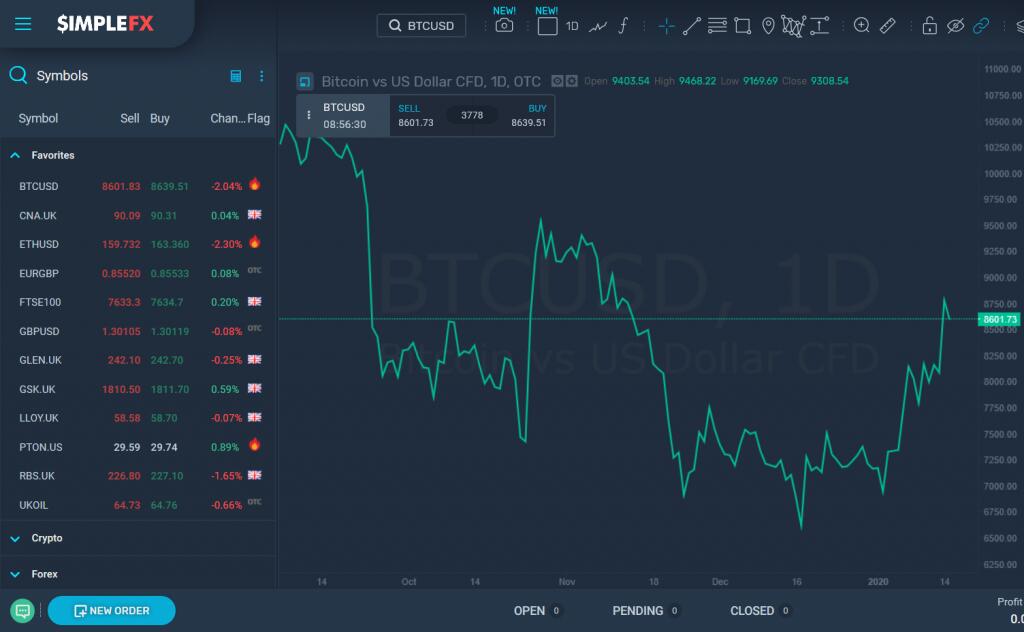

LWM2M’s primary benefit to enterprises is that it reduces vendor lock-in by allowing cross-vendor and cross-platform interoperability of data management and device management capabilities. This also reduces the complexities of managing heterogeneous hardware deployments. It contains standard objects and structured core functions for Connectivity monitoring, Remote device actions, Firmware update, Software Update, Lock & Wipe, Bootstrap, Diagnostics, etc. It can therefore be used for data reporting and device management. With MQTT, these features are entirely vendor and platform-specific.
ST goes in house for NB-IoT module … – eeNews Europe
ST goes in house for NB-IoT module ….
Posted: Mon, 27 Feb 2023 08:00:00 GMT [source]
The choice between the two standard IoT protocols depends on what you are seeking to achieve with your IoT project. However, if you are looking for a helping hand and want expert advice on which is the best IoT protocol for your IoT app development, you can totally count on Intuz. Moreover, if you are hosting and managing your cloud apps, use LwM2M for device management and build your MQTT broker for messaging. MQTT is known for data transfer, especially concerning one-to-many message distribution. This allows users to take necessary steps in real-time and that also proactively.
LwM2M与MQTT的区别是什么?哪个更适合IoT
The LwM2M client implementation contains code to initiate the connection with the server with credentials, sending the necessary data requested by the server, callback functions for LwM2M resource executions and send error events. LwM2M is also gaining popularity for use cases that require conditions-based monitoring. For example, for some security use cases, a device remains dormant until an event triggers an action. LwM2M is highly effective for monitoring a gas tank or a device with environmental alarms. It is ideal for situations in which the device should send a notification only if something has gone wrong, such as when a safety or security threshold has been crossed, to minimize data transmission.
There are several MQTT client libraries available depending on your preferred programming language. In an attempt to standardize device management and telemetry, LwM2M supports device management functions, in addition to data reporting . If you are an enterprise that has many unmanaged devices producing high data volumes, you must use MQTT.

The LwM2M advantages are expected to drive the growth of the technology for connectivity in many sectors, including agriculture, manufacturing, automotive, smart home automation, and utilities. LwM2M enables businesses to opt for smaller, more affordable IoT devices that are versatile and dynamic because they use wireless connectivity and do not require hard-wired connection. The thing is, these smaller devices run on batteries, so there is no need for direct electricity connection.
Implementation
Compared with WiFi and Bluetooth technology, ZigBee technology has outstanding advantages in power consumption, node capacity, self-networking ability, and security, and its application scale is expanding constantly. Physical Layer/Data Link Layer Protocol is generally responsible for networking and communication between devices, such as 2G/3G/4G/5G, NB-IoT, WiFi, ZigBee, LoRa, and other long-distance communications. There are also short-distance wireless protocols such as RFID, NFC, and Bluetooth Protocol, and wired protocols such as RS232 and USB. MQTT is designed to run over TCP/IP, MQTT-SN is designed to work over UDP, Zigbee, or other network protocols that can provide bi-directional connection, however, it has yet to be widely adopted by the industry. By hiring Integra Sources you get high-value technology consulting services and a team of IT engineers for your hardware or software project.
LwM2M has a straightforward communication and data model comprising standard objects and structured core functions, including firmware/software updates, bootstrapping, diagnostics, remote device actions, and connectivity monitoring. The flagship product EMQX IoT message broker can connect any device through open standard MQTT, CoAP and LwM2M Protocols. Enterprises rely on IoT data communications protocols to create a standard way to get data from devices to systems, platforms, applications, and other devices. While MQTT is the most common protocol used by enterprises today, MachNation believes that LWM2M is growing in market share.
If you agree to a specific communication channel, we can also contact you in the future for marketing purposes. You can withdraw your consent at any time or object to data processing. You have the right to r access your personal data, the right to rectification data, the right to erasure data, the right to demand the restriction of the processing of your personal data and the right to object to the processing of your data. More information about processing of your personal data is available here. TCP-based protocols such as Message Queuing Telemetry Transport will perform poorly over NB-IoT networks because NB-IoT has significant latency, conceived to support User Datagram Protocol communications.
Data processing times
This has resulted in an increase in different vendors, offering sensors and devices over a single IoT deployment. The arrangement makes LwM2M ideal for reporting, IoT analytics and device management. On the other hand, MQTT is completely platform-specific and vendor-oriented. MQTT comes in handy for an event-driven and message-driven exchange between devices across networks. This protocol is often used for routing information between IoT devices with low bandwidth, memory, and power capacities. LwM2M ensures 72% less data transfer at initial connection, and 31% less data transfer when dealing with a steady-state device connection.
IoT Device Management Using LwM2M – IoT For All
IoT Device Management Using LwM2M.
Posted: Fri, 10 Mar 2023 08:00:00 GMT [source]
Firmware is a part of Internet of Things devices that you can’t see, measure or control. In MQTT, there are a few QoS options that can be used for guaranteeing delivery in IoT projects.
LwM2M vs MQTT:相似之处
While building IoT solutions, keeping the footprint small is of utmost importance. This requirement influences all design aspects of IoT solutions, including communication. Transferring data from your IoT devices to your application servers efficiently is important, but at the same time, you also need to have a lightweight way of doing so. In this post, I will compare MQTT and LwM2M communication protocols for IoT solutions.
As an example, the device here is an object, with id 3 and the device has resources like firmware version, serial number, etc. which have a fix resource id. So to get information about a particular resource of the object device, the server can send a call like READ 3/3/0. The LwM2M communication protocol was developed by theOpen Mobile Allianceto link LwM2M-enabled devices with LwM2M-enabled servers. The protocol lets users perform tasks, run diagnostics and applications, and engage device management on their remote IoT-embedded devices. On the other hand, while LwM2M offers similar features in terms of transport-layer security (natively supporting the DTLS 1.2+ and TLS 1.2+ protocols), it additionally ensures end-to-end application-layer security by using OSCORE.
Let’s talk a little about each protocol and when it’s best used in an enterprise IoT deployment. In order to determine which protocol is the best fit, one should consider the context of the use case that will best fit the process and if the protocol can be easily and efficiently integrated with the device. According toGoogle Trends, the level of interest in MQTT has quadrupled worldwide in the past 5 years. This trend is supported by the high-speed expansion of the IoT market and a persistent tendency towards simplicity and resource efficiency. According to our benchmarking results, CoAP showed outstanding performance in throughput. HTTP and MQTT with QoS 1 and QoS 2 were on much the same level with the lowest throughput.
Despite the lwm2m vs mqtt architecture and low message size, MQTT runs on TCP that contains connection requests, handshakes, and a delivery guarantee. LwM2M stands for Light Weight M2M. It is a protocol designed by OMA SpecWork’s for device management but is also suitable for data transfer with the objective of attaining reduced power and data consumption. It is built on top of CoAP which increases its bandwidth efficiency. LwM2M has a transport agnostic design which by default uses UDP, but also supports TCP and SMS.
https://forexhero.info/ and agile, LwM2M empowers organizations to support use cases they could not have sustained before. MQTT often runs on TCP/IP, a relatively heavy protocol, but LwM2M rides on top of UDP and many other means of transport, with more continually being added as the standard evolves. On the other hand, MQTT cannot function unless there is a device language in place for every project separately. However, such an integration is always a challenge when using MQTT for proprietary device management payloads in IoT.
- While MQTT is the most common protocol used by enterprises today, MachNation believes that LWM2M is growing in market share.
- Z o.o., Radzikowskiego 47D, Cracow is the controller of your personal data.
- Despite the lightweight architecture and low message size, MQTT runs on TCP that contains connection requests, handshakes, and a delivery guarantee.
- The server then uses REST APIs to perform either of the above functions.
- On July 9, 2020, 3GPP announced the freezing of 5G R16 standard, and NB-IoT was formally incorporated into 5G standard, becoming the core technology of 5G mMTC mass IoT connection scenario.
- LwM2M is a robust protocol that is suitable for both low and high-intensity IoT projects.
For starters, both MQTT and LwM2M are standard protocols for the transportation of data from devices to other devices, systems, platforms and applications. Here, let’s not overlook the word ‘standard’ from the previous sentence — in the fragmented IoT world of proprietary systems and vendor lock-ins, standards are like safe islands in a sea of smart chaos. By having their own working groups dedicated to specifying and standardising them, they have become widely accepted standards and are enjoying vast popularity in a variety of IoT projects. Lightweight and easy to implement, both are well-suited to low-power resource-constrained devices operated over low-bandwidth networks. This is about where their common points end, so let’s have a look at the differences.
With the development and popularization of IoT technology, more and more intelligent devices have the ability of network connection and data transmission. Another thing in which both protocols differ is their approach to the issue of data processing times. With MQTT, data transfer can be very fast, enabling to take actions in real time, but again, it all depends on the network architecture and system complexity. By using UDP as its transport layer, LwM2M can have similar or even better response times while still offering more robust architecture. Thanks to this, it is able to manage more resource-consuming embedded devices which benefit from more effective communication while offering better performance in terms of responsiveness.
We created a testing environment to measure latency and throughput. These are the measurable parameters that highlight a protocol’s performance. But it puts a strong emphasis on message delivery that adds overhead and makes it high compared to MQTT. To get a true picture of the performance and relevance of the MQTT protocol for Internet of Things, let’s put things into perspective. To improve authentication, you need to modify the protocol, and therefore the broker. Since an off-the-shelf broker does not allow for such modifications, you will have to deploy your own broker and customize it.
What’s This LwM2M Standard, And Why Should You Care? – IoT For All
What’s This LwM2M Standard, And Why Should You Care?.
Posted: Fri, 06 Jan 2023 08:00:00 GMT [source]
It ensures smooth data transfer with low bandwidth and reduces the load on the CPU and RAM. The resource efficiency of MQTT played a major role in the system, working via the costly satellite link. Later on, MQTT has come into use with more accessible and low-cost communication channels and in various application areas, including the Internet of Things . For all the above functions there are procedures defined, e.g. how the device registers at the server, or how the server initiates a client diagnosis. Moving forward without determining the KPIs that define your service’s costs and efficiencies could create issues as you deploy and scale your solution.

Unlike MQTT, CoAP has no Quality of Service and it runs on UDP, which has no guaranteed delivery. To ensure delivery, it uses confirmable and non-confirmable messages. HTTP has no Quality of Service or other services, so it relies on TCP only as a guarantee of message delivery. This implies the transmission of large-size messages and high overhead.















Θα πρέπει να συνδεθείτε για να σχολιάσετε